On this occasion, we will touch upon aspects that are directly related to shooting itself.
For starters, we need to say that the Rules that apply to a World´s Match (or WeltMeisterSchaften as it would be called in German, the host country's language for 2013), are the "Comprehensive Rules" as adopted by the World Field Target Federation (WFTF).
These rules deviate a little from the WFTF Division Rules adopted by AAFTA in the 2013 Handbook. AAFTA's "WFTF DIvision" rules are the rules to follow in National events held in the USA, but World's Matches use the Comprehensive Rules above linked. A detailed comparison is out of the scope of this post, but the reader is encouraged to read them and compare them at his leisure.
Once the Rule framework has been defined, World Matches usually are three day events that get stretched out to 4 days because of the "Suggestion" from the WFTF to all the Host Countries to make the range available the day before, for sight-in purposes and to setup a "practice course" that should reflect the typical shots to be encountered over the three day formal match, albeit on a much smaller scale. Usually practice courses are around 20 shots; not long, but they do reflect the variety and general terrain conditions of the formal match.
After the day of sighting in and the practice run, the opening dinner is held (look at my previous post for pictures), and the Match is formallly started, usually on a Friday.
The FIRST thing a shooter needs to do is to look up which course he will shoot (there are usually three courses in a World's Match), with whom he is squadded, and which is his starting lane. No one is going to bother calling out missing shooters, and shooters that do not arrive to the starting point in time, may end up loosing complete lanes to their tardiness.
A very common squadding sheet is like this:
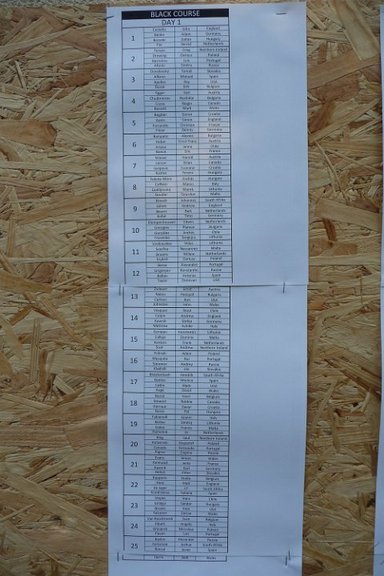
In this instance, the squads were initially planned as 4 gun squads. In practice, a number of shooters did not show up and a lot of squads ended up being 3 gun squads.
If you consider that the BDS had to turn away more than 150 shooters for lack of space, it is somewhat sad that there were so many no-shows. BUT, this is not an airline flight that can be safely, statistically, oversold. So this points out to the need of EARLY PLANNING and strong commitments.
Once the shooter has noted his starting lane, his Squad mates and the course he is in for that day, he needs to head to the sight-in range assigned to that course. BDS, very providently, set 3 sight-in courses, so that everyone could have at least one 15 minute session at the sight-in targets. Some range officers enforced complete line changes every 15 minutes, others simply requested fairness and reason.
After the always too short sight-in time, a shooter's meeting is called.
At least in Norway and Germany, the shooter's meeting has been mostly about news and noticeable items or information. Both MD's for the last two World's have stated that they will not go over the safety rules because all shooters there are experienced shooters.
While that may sound strange, that is the way it has been for the last two years.
Shooter's Meetings have lasted less than 20 minutes, so promptly after the meeting, everyone starts trekking to where they will start their day.
In Norway, the walk was short from the Meeting to the starting line, but in Germany, some ranges were at least a mile away, and shooters had to walk with their gear all the way up, then around the course (about 1½ miles) and then down for a total of 3½ miles walked during the day. It is not really a sport for those that have mobility issues.
As to the ranges themselves, one of the things that strike our attention, always, is the steep angles of some shots:
Verónika, my wife, keeps a record of all the distances she ranges, and using that valuable source of information, I can tell you that out of 50 shots in the first day that, for us, was the Yellow course, with lots of angled shots like the one above, I can count:
11 targets between 9 and 19 meters
10 targets between 20 and 29 meters
7 targets between 30 and 39 meters
22 targets between 40 and 50 meters.
Most of the short targets were positionals (Kneeling or Offhand), some of them were "reduced" (25 or 15 mm's) and some of them were at quite an angle. Not a few combined all three complexities.
As to how many steep angles there were, each course had a different setting and therefore the terrain varied, but in the Yellow course, where most of the steep shots were encountered, HALF the shots were steep angles of varying degrees. Per my rifle's inclinometer, the steepest angle we found was 40° and the most common (and bewilderingly hard, BTW) was 20°.
Sadly, at least in one instance, their suspicions were true.
In Verónika's case, since she uses Barracuda Green pellets by H&N, her MV is a little bit unexpected, so it always causes other marshalls to come near and observe:
Verónika likes to take notes, it helps her keep focused; I prefer to take short walks around. Isolate myself and allow the other three to reset, score and bicker. Sometimes I also score, or reset, or bicker, but it's all in the fun. You need to decide how best to keep your mind to the task at hand.
After all the shooting is done, you need to find the score-gatherer:
Our most demanding Matches are all the Grand Prix events and the Nationals (itself a GP event) that are two day affairs, but we do not have any three day events.
And that this is VERY notable when we are tired or stressed.
Since shooting is basically a "seeing" sport, this stress and tiredness need to be watched over carefully.
Further: most physiologists admit that it takes the body about 1 day per hour of Jet-Lag to adapt. So, if you are thinking of shooting in Europe, you would do well to think of allowing yourself at least 5 days previous to the shoot for Jet-Lag. And shooting in New Zealand, with its 16 hours difference in the time zones is going to pose a VERY interesting problem.
Make sure you take plenty of pellets (we spent about 2,000 pellets each in the shoot) and stash away plenty more for pre-practice.
Scopes fail, so take a back-up.
And, regardless of your results, remember that you are there to enjoy yourself!
See you on the lanes!
Héctor Medina
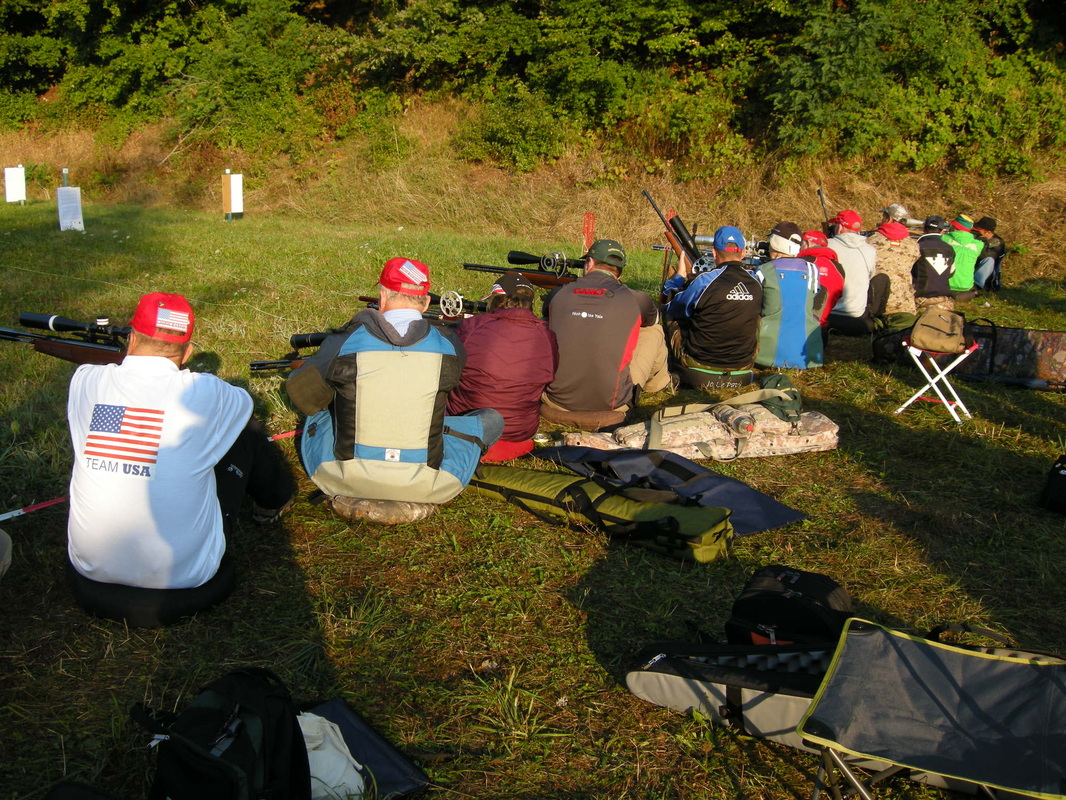
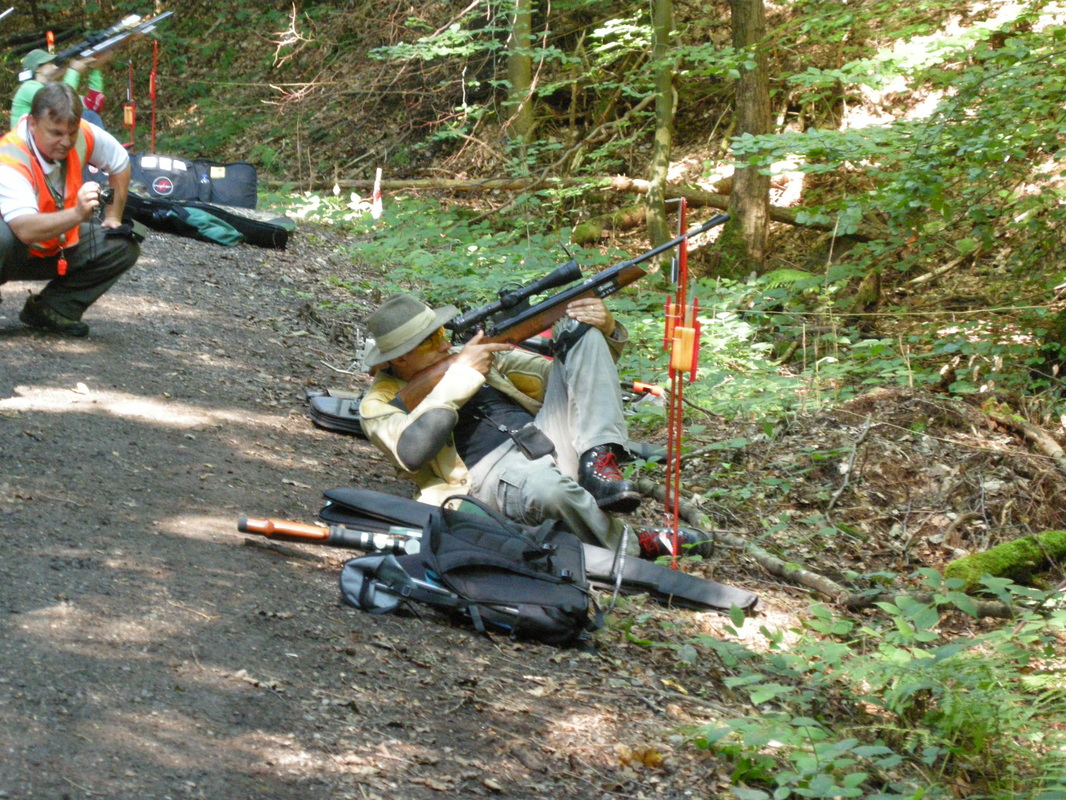
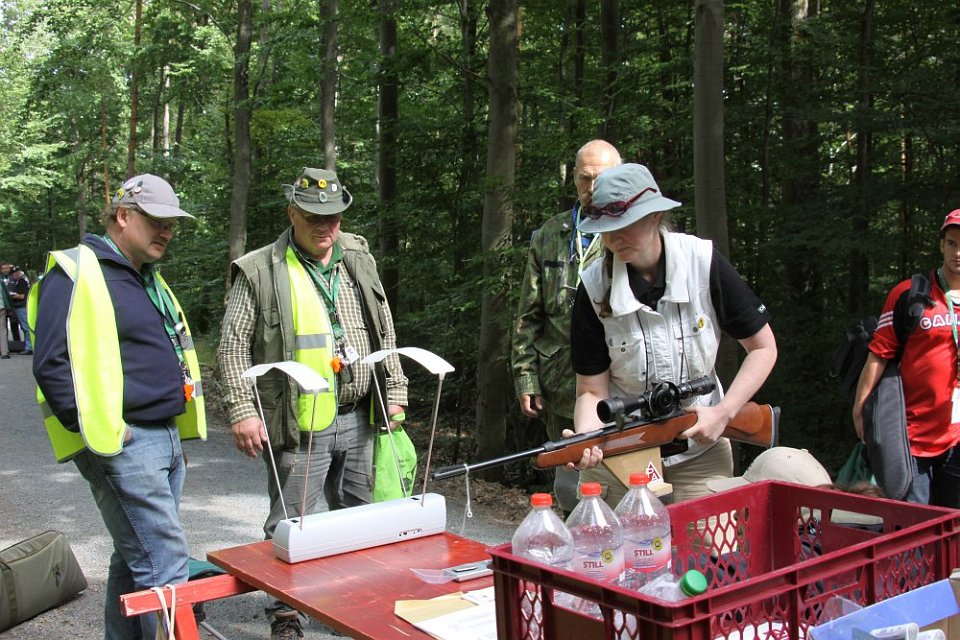
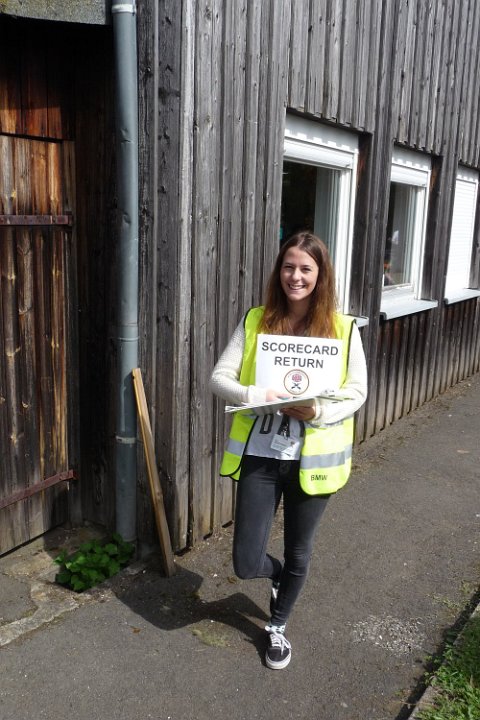
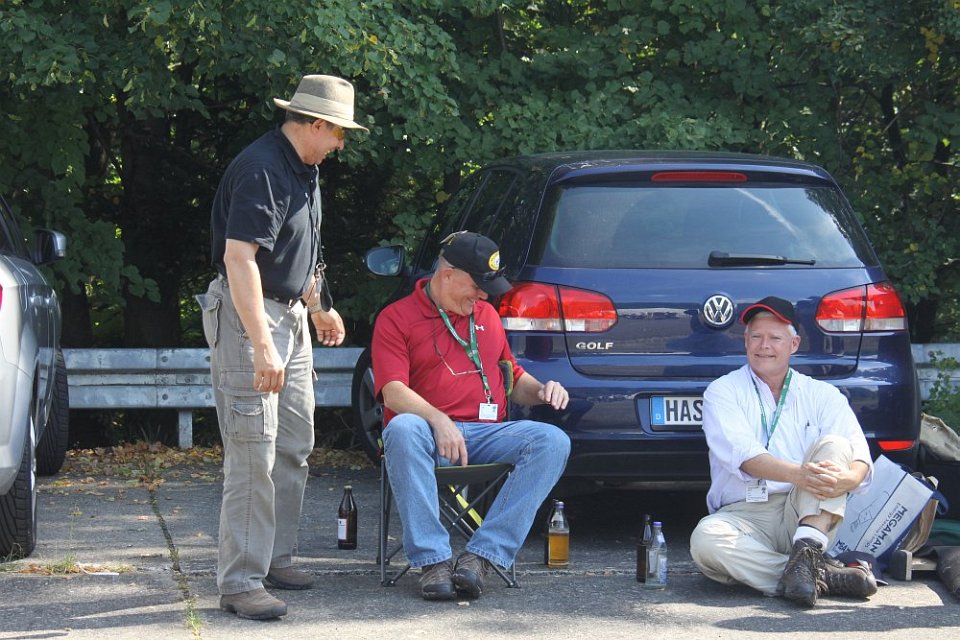
 RSS Feed
RSS Feed